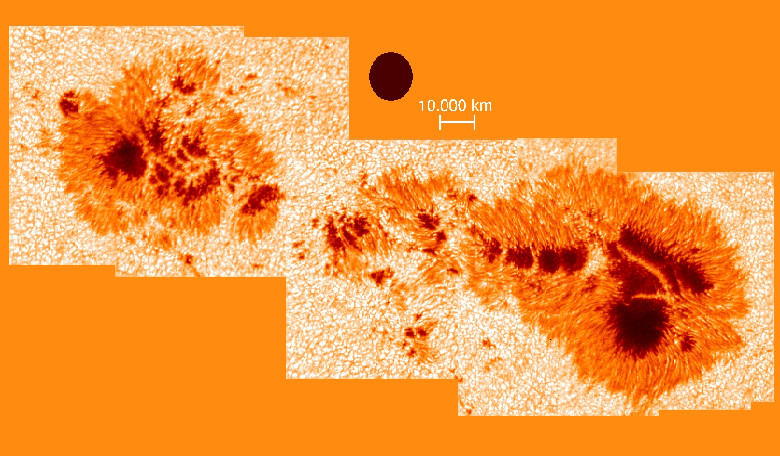The secrets of the Sun’s surface is one step closer to being understood, as high-quality magnetic-field data from GREGOR has been released as it undertakes its first phase of scientific use.
With an aperture of 1.5 metres, GREGOR is Europe's largest solar telescope and is located at Teide Observatory on Tenerife, Spain. It observes the Sun at visible and near-infrared wavelengths and its primary scientific goal is high precision measurements of the solar magnetic field. With a spatial resolution of some 50 km, it means that the telescope can distinguish details on the solar surface if the size of the phenomena is 50km or bigger (any smaller and it wouldn’t be able to make out the details accurately enough). This is extremely handy as numerical computations indicate that much of the interaction between the solar plasma and the magnetic field on the Sun occurs on very small spatial scales of about 70 km.
Understanding the Sun’s magnetic activity is key to our understanding of our nearest star, as it plays a dominant role in virtually all processes in the solar atmosphere. Magnetic activity is responsible for the energy balance of the Sun’s outer atmosphere, and it produces most of the spectacular visible phenomena, like sunspots, flares and coronal mass ejections. The latter of which can cause huge disruption to satellites and electrical equipment on Earth.
Although much is known about the Sun’s magnetic flux, many questions still remain unanswered, for example, it is known that magnetic flux appears at the solar surface as dipoles with a variety of sizes, from large spots to small magnetic elements. However, as the flux does not constantly increase, its source must be limited and it must ‘terminated’ in some way as the total flux of the Sun is replaced within 2 or 3 days.
Magnetic flux and sunspots go hand in hand and it has also emerged that so-called ’light bridges’ – lanes of bright material that divide the umbra in a sunspot – are one of the key surface phenomena that relates directly to sunspot sub-surface structure. The umbra is the inner, dark, cool region of a sunspot, in which the Sun’s magnetic field is very strong.
The decay of a sunspot is a slow process, and light bridges are often observed during the break-up of sunspots. It is thus suggested that sunspot light bridges can be formed due to the fragmentation of the umbra in the decay phase and they can also represent the re-establishment of convection which is normally suppressed by the sunspot's strong magnetic field.
To highlight the initial success of GREGOR, a series of papers based on the telescope’s first science data has just been released in a special issue of Astronomy & Astrophysics. Research has revealed for the first time that even in the most quiet areas on the Sun, 80% of the area is covered with magnetic fields.
Light bridges were also given a thorough examination. Building on work already known about this phenomena, an international team, whose lead author on the research paper is T. Felipe from the Instituto de Astrofísica de Canarias, Spain, analysed aspects of a sunspot a few days before it completely decayed.
In addition to confirming previous results that the magnetic field structure of the light bridge shows lower and more horizontal magnetic fields relative to the umbra, it also shows central hot upflows surrounded by cooler downflows that is interpreted as a evidence for vigorous convection in the bridge. The team also state that the light bridge is dominated by gas pressure, as opposed to the surrounding umbra where the magnetic pressure is higher.
Light-bridges have been known to display significantly enhanced chromospheric brightness and activity and whether this activity reaches as far as the Sun’s outermost atmospheric layer, the corona, is a question answer many solar-scientists would like to see answered.
For this to happen, it is suggested that the magnetic configuration data analysed by Felipe and team will need to be extended to tracking an active region over several days. Something that may be possible as one of world's most powerful solar telescopes, with its combination of high spatial resolution and high magnetic field sensitivity, springs into action in the coming years.
For a deeper analyse on the three-dimensional structure of a sunspot light bridge, see here: https://arxiv.org/pdf/1611.04803v1.pdf











